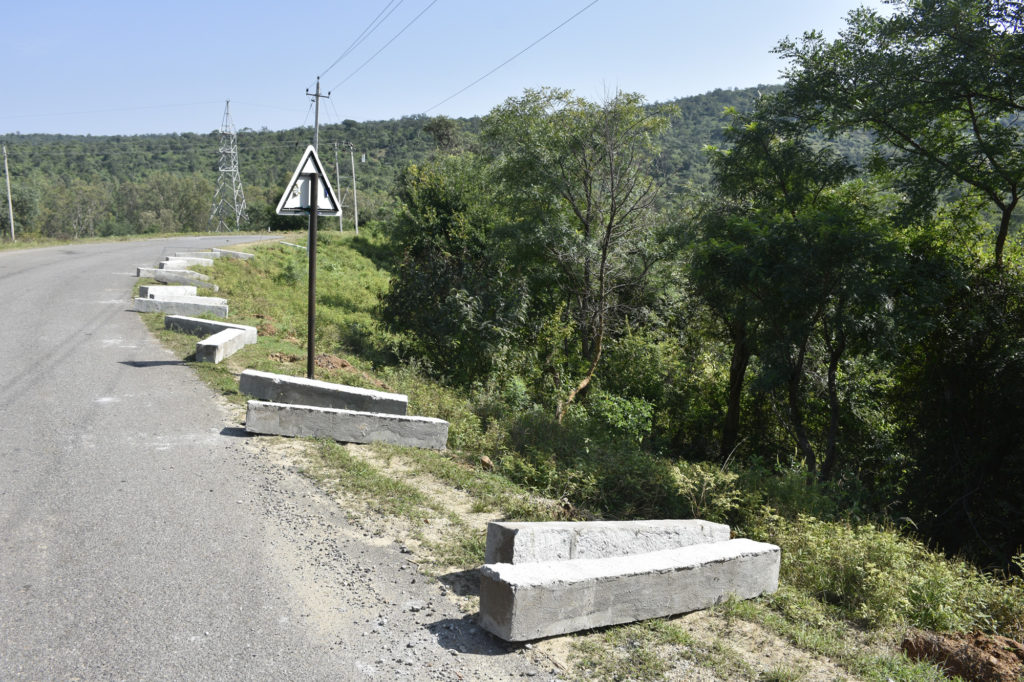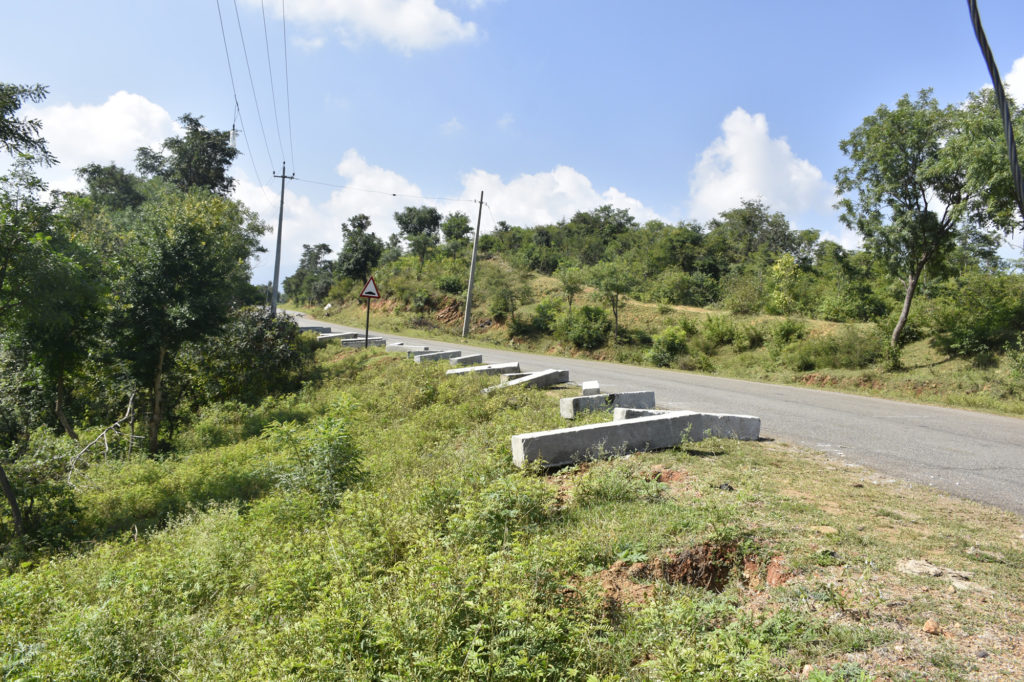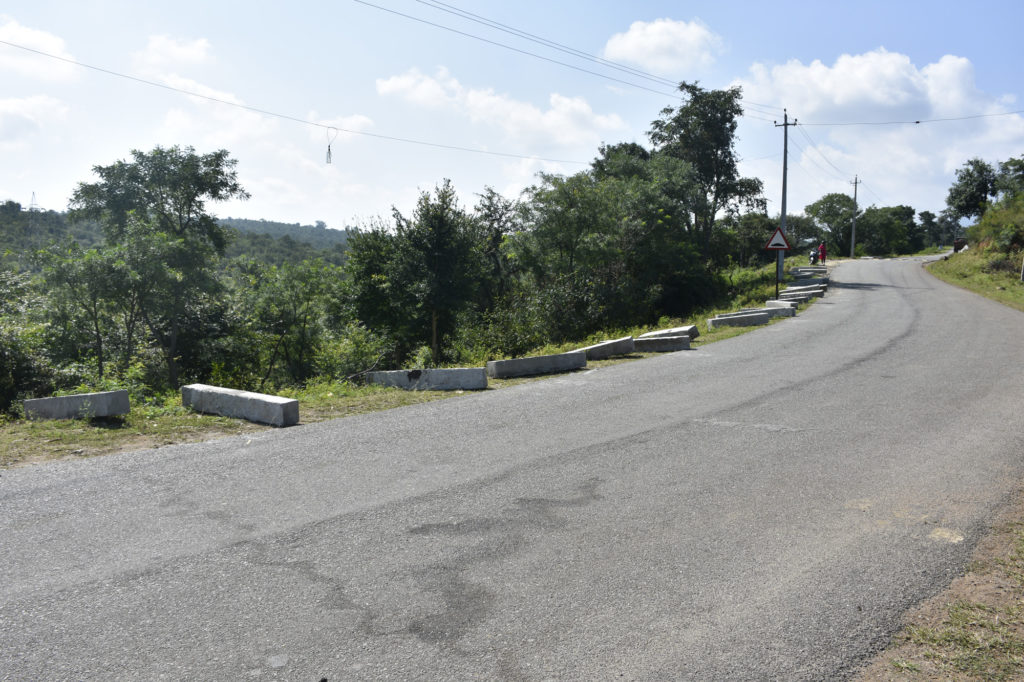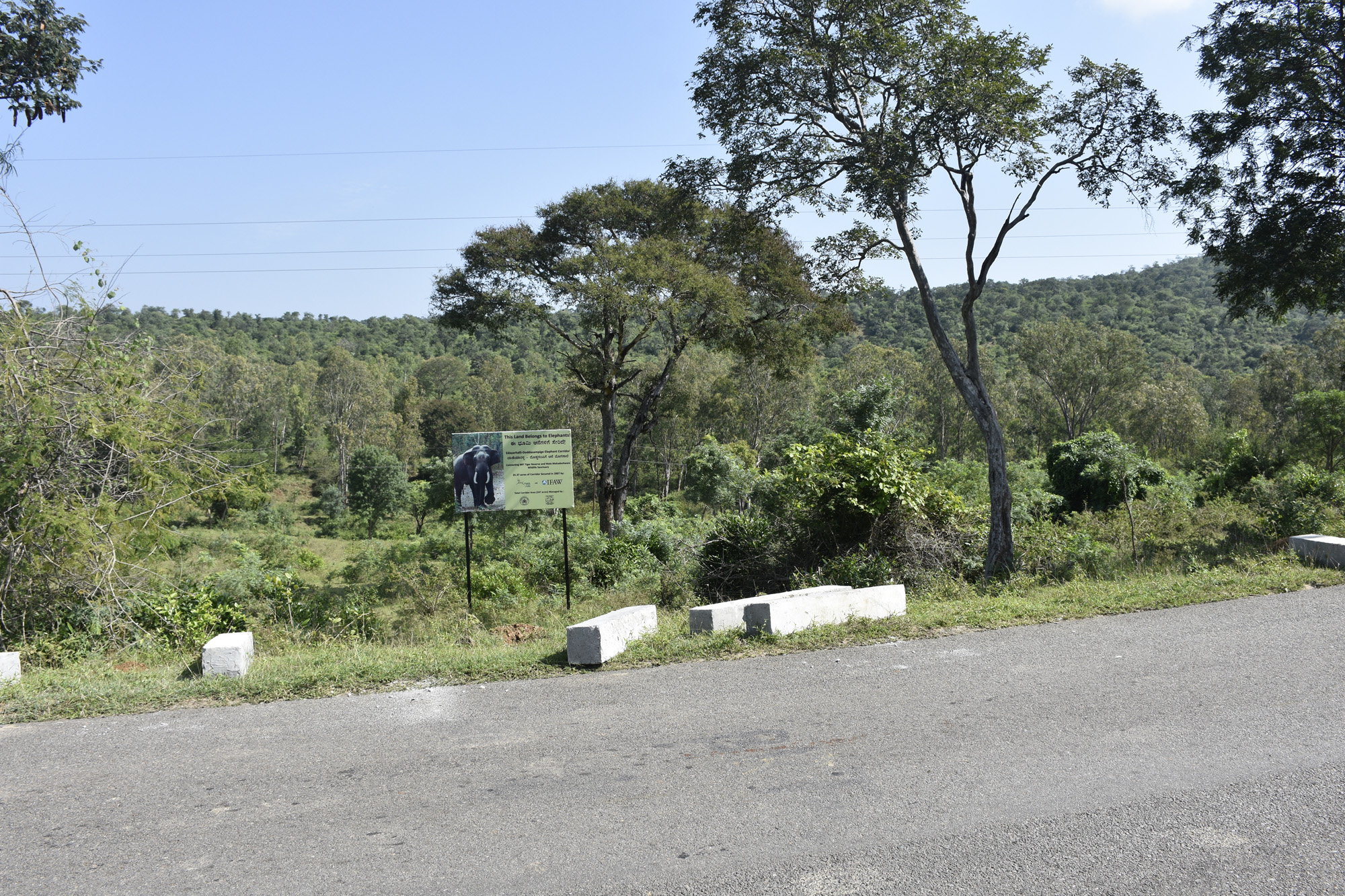Meera Bhardwaj
This Land belongs to Elephants, proudly proclaims a signboard on Edyarhalli-Doddasampige Elephant Corridor in Kollegal taluk, Chamarajnagar district, Karnataka, India. A few days back, the elephant landscape saw unusual and disturbing activity that raised the hackles of both wildlife conservationists and forest officials.
The state Public Works Department (PWD) had quietly brought in cemented pillars and tried to erect these ‘road barriers’ on this vital corridor which would have cut off the free movement of elephants from BRT tiger reserve to the MM Hills Wildlife Sanctuary. However, the state forest department stepped in fast to stop the illegal construction activity on the corridor that is expected to see further expansion of its area.

The Edyarhalli-doddasampige Corridor was the first elephant corridor in Asia that was secured through private purchase of lands and provides a safe passage for a thousand elephants and other wildlife thereby, minimizing man-animal conflicts in this region.
Presently, the corridor is on a 1.8 kilometer stretch that is divided by State Highway-38 connecting Kollegal (Karnataka)and Hasanur (Tamilnadu). As per Union Ministry of Environment and Forest guidelines, 2011, (Section 4.2) a wildlife corridor is included within the eco-sensitive zone of a protected area. So, any form of construction inside a corridor can only be undertaken after permission from the state’s chief wildlife warden, State and National Boards for Wildlife. But here, no permission was sought.

“The moment it came to our notice of curb stones being erected by the PWD, the work was immediately stopped, says V Yedukondalu, MM Hills Wildlife Division, Deputy Conservator of Forests.
Yedukondalu adds, “The local PWD had taken up this work on the corridor without any permission. They had readied to put up white painted curbs for speed cutting on this corridor; however, there are already speed barriers and signboards of speed limitation of 30 kms/hour on this road. This new barriers if erected would have disturbed the elephants and triggered people to travel at high speeds on a stretch that sees high movement of wildlife.”

Sounding caution, wildlife activists say although the construction work has been stopped, there is lot of political pressure to take up the fencing work. They add, “The PWD department had not obtained any permission and had flagrantly violated guidelines with the construction work inside an elephant corridor in contravention of the Wildlife Protection Act of India, 1972.”
This corridor is a vital connection for movement of elephants/other wildlife between BTR Tiger Reserve and MM Hills Wildlife Sanctuary. And any kind of barrier here will lead to human-wildlife conflicts. A recent study of this Corridor has revealed that elephant, tiger, leopard, sloth bear, chital and other wild animals use the corridor for crossing. So there is a strict necessity to maintain its continuity and vigil as any obstruction will lead to spilling of wildlife to farmlands surrounding the corridor, opine activists.


Comment here